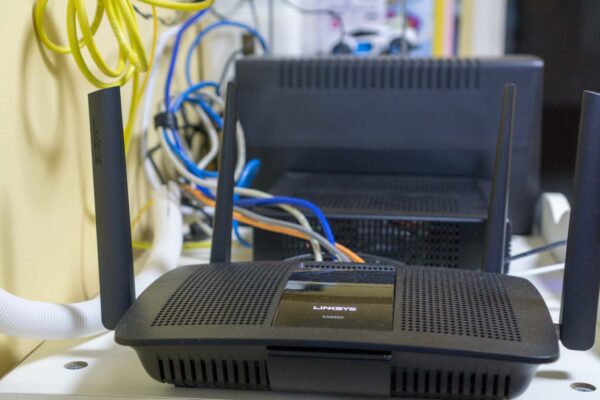I get asked from time to time what sort of network I have setup at home. It’s nothing very exotic, though at the same time it isn’t the standard basic broadband router setup that most people have at home. Here’s what I have setup now.
Instead of the typical wireless broadband router that most people plug into their broadband connection, I have a pfSense router. I’ve been using pfSense for many years, and even gone through two generations of a DIY pfSense mini-ITX box. It’s served my purpose really well. Once, the box had three Internet connections. These days, it’s just one. StarHub fibre broadband, if you like to know.
I decided not to build Wi-Fi into the DIY pfSense box. Instead, the main Wi-Fi network at home is provided by a Linksys EA8500 router. I figured it would provide better Wi-Fi performance than some DIY Wi-Fi hardware. The EA8500 is configured in bridge mode, so it’s not like I have a router being a router.
The pfSense box is the main broadband router. The Linksys EA8500 is a simple wireless bridge, or what some refer to as Wireless Access Point mode. pfSense provides all the LAN services directly on this primary Wi-Fi network.
I have a second Wi-Fi network too. It’s provided through a Linksys EA3200. Again, it’s not quite the normal setup. The Linksys software has been replaced by Tomato router. It’s sort of like DD-WRT, but another open source community development. I had chosen that over DD-WRT because, at the time I was deciding between the two, only Tomato provided 5 GHz radio support on the E3200.
Why do I have another Wi-Fi network? I have this second one permanently connected to a USA VPN service. The idea is this. Whenever I connect to this Wi-Fi network, I am teleported to the United States. This is really useful for many reasons. One can, for example, use this to access Netflix (before Netflix arrived in Singapore), or access other content that has been geo-restricted.
Since last year, I’ve also embarked on some home automation projects. I settled on the Vera Plus home controller (which I just realised I’ve not written a full standalone review on it). It supports Z-Wave and ZigBee protocols, and via a add-on transceiver, Insteon and X10 too. All I have at the moment are Z-Wave devices though.
I have a Raspberry Pi Touchscreen interface too. I had planned for it to be a touchscreen home automation user interface, though I haven’t quite gotten around to programming it. I have had other plans for it to blast IR signals to control other stuff too, but, yeah, also not yet.
The Raspberry Pi does serve another purpose now. It runs ha-bridge, which enables my Google Home to communicate with the Vera Plus. This lets me use far-field voice commands to control various home automation devices around the house.
There are many more ideas planned, just no time to execute. Also, it might be good to have some hardware tidying up or housekeeping too.

